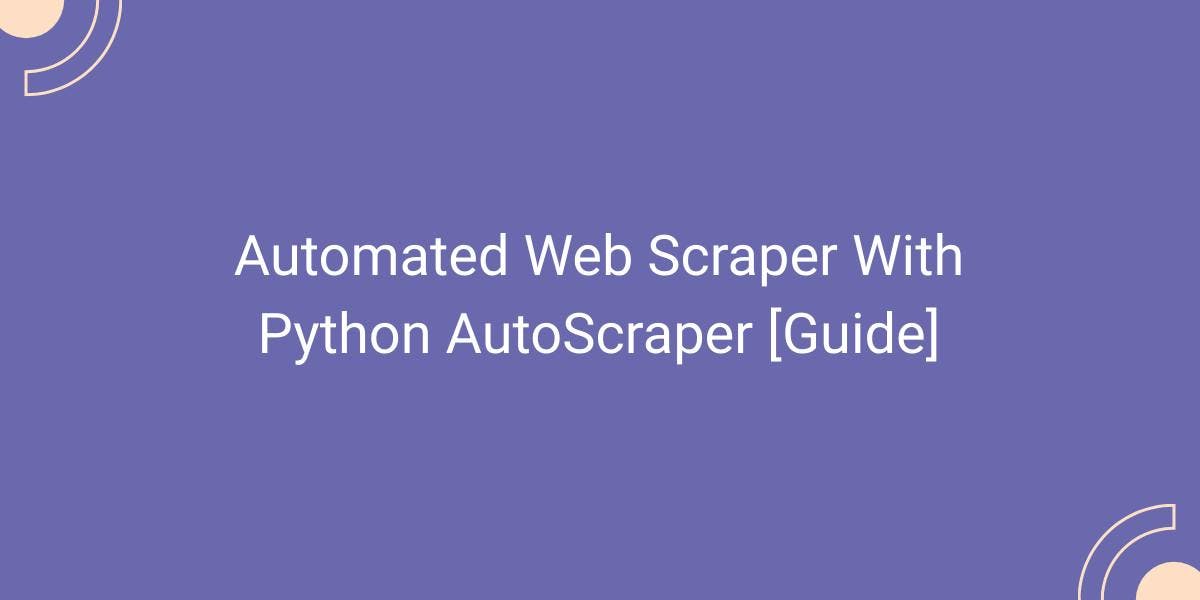What Is a Rotating IP Address ?
Flipnode on Apr 26 2023

It's not uncommon to hear the term "rotating IPs" when discussing web scraping, but understanding what IP address rotation entails and why it's important can be a challenge. Essentially, IP rotation involves regularly changing the IP address used to access a website. This can be achieved through a variety of methods, such as using a pool of proxy servers or a VPN service.
So why is rotating IPs important? Well, websites are increasingly implementing measures to prevent web scraping, such as IP blocking and rate limiting. By rotating IPs, web scrapers can avoid detection and continue to scrape data without being blocked or rate limited. Additionally, rotating IPs can improve the reliability and speed of web scraping, as different IP addresses may have varying levels of connectivity and performance.
There are several strategies for implementing IP rotation in web scraping, including using a rotating proxy service, setting up your own pool of proxy servers, or using a VPN. It's important to note that while rotating IPs can help avoid detection and improve performance, it's still important to practice ethical and responsible web scraping. This includes respecting website terms of service, not scraping sensitive or personal data, and ensuring that your scraping activities do not negatively impact website performance or availability.
Overall, rotating IPs can be a valuable tool in the web scraper's toolkit, helping to ensure that data can be scraped effectively and reliably while minimizing the risk of detection and blocking. However, it's important to approach IP rotation with caution and to always prioritize ethical and responsible web scraping practices.
What is IP address rotation?
To fully understand the concept of IP rotation, let's first delve into the basics of IP addresses. An IP address is a unique identifier assigned to a device connected to the internet. There are two types of IP addresses, namely IPv4 and IPv6. You can read more about these in this article.
IP rotation is a process that involves the random or scheduled distribution of IP addresses to devices. For instance, when connecting to the internet via an Internet Service Provider (ISP), an IP address is automatically assigned from a pool of available IPs. The ISP then distributes the IP address to the device, and when the user disconnects, the IP address is returned to the pool.
ISPs use dynamic IP addresses that rotate frequently because they usually have more users than IP addresses at their disposal. This means that as soon as a user disconnects from the internet, the ISP will return the user's IP address to their pool of IP addresses and assign a new IP address to the next user.
Moreover, there are types of proxies known as IPv6 or IPv4 proxies that are specifically designed to work with each protocol to enhance security and performance. These proxies can also be used to rotate IP addresses for web scraping purposes. With IPv6 or IPv4 proxies, web scrapers can rotate their IP addresses and avoid getting detected by websites that may block their IP addresses.
In summary, IP rotation is a critical process in web scraping, as it helps web scrapers avoid detection and ensures that they can access websites without encountering any issues. By understanding how IP addresses work and how they are rotated, web scrapers can implement effective strategies to ensure that their web scraping efforts are successful.
What is proxy rotation?
ISPs often rotate IP addresses automatically, but in some cases, internet users may intentionally rotate their own IP addresses for various reasons. One popular tool used for IP rotation is rotating proxies. By using rotating proxies, multiple connections can be managed from a single device, making web crawling and data scraping operations much easier and more efficient.
There are several methods for rotating IP addresses, and some require manual intervention, such as using Chrome proxies. However, there are also automated tools available that can handle the rotation process seamlessly, without requiring any manual input. These tools can be particularly useful for large-scale web scraping or other data gathering projects where the rotation of IP addresses is critical to avoid detection or to bypass IP blocking.
Why rotate proxies?
Web scraping can be challenging because websites often block scraping attempts. However, there are several techniques that can help prevent blocks, including proxy rotation. Proxy rotation is a method that involves using a rotating pool of proxies to imitate the behavior of multiple users, making it more difficult for websites to detect and block scraping attempts.
Proxy rotation is widely used across many industries for various purposes. For example, SEO firms use proxies that automatically rotate to check keyword rankings from different locations, such as using a Brazilian or German proxy to check keyword rankings in those countries. Data intelligence companies also use proxy rotation to scrape websites for analytical and performance purposes. Corporate firms may rotate IP addresses to eliminate regional presentation and price gouging, while data triangulation companies use IP rotation to validate data. IT companies also rotate IP addresses for their outgoing bots to maintain network loads.
By using proxy rotation, web scrapers can exceed request limits and eliminate geo-restrictions. This technique enables them to gather vast amounts of data while minimizing the risk of being detected and blocked by websites.
Methods used to rotate IP addresses
There are various methods used by Internet Service Providers to rotate IP addresses, including:
- Pre-configured IP rotation: This technique involves setting up a predetermined schedule for IP address rotation. Once the specified time has passed, the user is automatically assigned a new IP address.
- Specific IP rotation: With this method, users can choose which IP address to use for their outgoing connections, giving them greater control over their online presence.
- Random IP rotation: This approach assigns a randomly selected IP address to each new outgoing connection. The user has no say over which address is assigned, making it a good option for those looking to add an extra layer of anonymity to their online activity.
- Burst IP rotation: This type of IP rotation involves the ISP assigning new IP addresses after a certain number of connections have been initiated. For example, if the specified number is 10, the ISP will provide a new IP address to the eleventh connection after every ten connections have been established. This method helps to distribute network traffic and prevent congestion.
How to rotate an IP address?
Proxy Rotator
A convenient way for internet users to rotate their proxy IP address is by using an automated proxy rotating tool. This tool utilizes the random IP rotation method and performs the following steps:
- First, log in to your account or contact the provider to add the proxy rotator to your proxy plan.
- Next, receive a single endpoint for your assigned proxy list.
- With each request, the endpoint will retrieve a new IP address.
A dedicated proxy rotating service offers several benefits for web scraping, including bypassing blocks and reducing the risk of incorrect IP rotation configuration, which can result in proxy overuse and bans.
Manually
At the individual level, proxy rotation can be accomplished manually. A user can manually configure proxy settings in Chrome, for example. Proxy managers, such as FoxyProxy, can significantly assist in setting up and quickly changing proxies. These managers help simplify the process of rotating proxies, reducing the risk of errors that can lead to blocks while web scraping.
Programmatically
The Python Requests library provides a programmatic way of carrying out the proxy rotation. With this tool, users can set up an automated proxy rotation and ensure that their web scraping activities are not interrupted by blocks. Additionally, this method eliminates the need for manual configuration and reduces the risk of errors that could lead to bans. By using the Python Requests library, users can easily manage their proxies and carry out web scraping operations with ease
Conclusion
After understanding the advantages of combining proxies with IP rotation, it becomes clear how crucial it is to implement a top-notch proxy rotation solution. Particularly for those engaged in data scraping and web crawling tasks, a reliable proxy rotation service can dramatically enhance the success rates of their operations and safeguard their proxy pool infrastructure.
Not only does a rotating proxy help to evade anti-scraping measures and prevent getting blocked by websites, but it also allows scrapers to simulate multiple user behaviors, providing greater anonymity and ensuring that the gathered data is more accurate and comprehensive.
Moreover, a high-quality proxy rotation solution is essential in preventing the overuse of some proxies, which could ultimately lead to bans, and in maintaining a healthy and diverse proxy pool. Proxy managers like FoxyProxy can help automate the process of configuring and changing proxies, making it easier for users to manage their proxy rotation settings.
In short, if you are a data scraping or web crawling enthusiast, it is imperative to incorporate a reliable proxy rotation service into your toolkit. Doing so will not only improve your scraping success rates but also protect your proxy pool infrastructure and ensure more accurate and comprehensive data.



